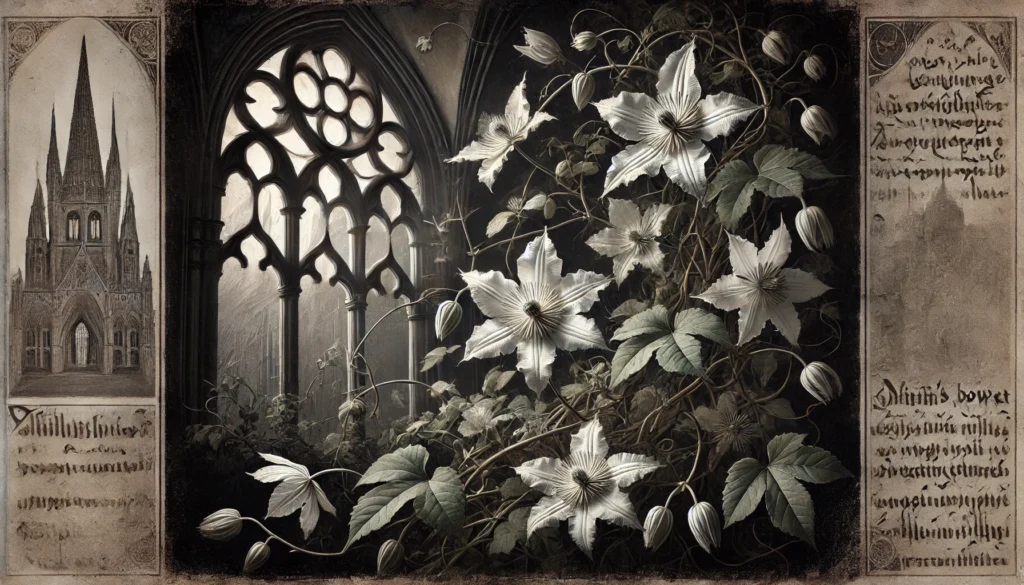

Home » Cat Plants » How Dangerous is the Virgin's Bower Plant for Cats?

Virgin’s Bower (Clematis) is a popular flowering vine often grown in gardens. While it adds beauty to the landscape, this plant can be toxic to cats. All parts of Virgin‘s Bower contain compounds called glycoside ranunculin and anemonin that are poisonous if ingested by felines.
The plant is commonly found growing on trellises, fences, or the sides of buildings in USDA hardiness zones 4-9.
Ingestion may cause mild gastrointestinal upset, but is generally not life-threatening.
Ingestion can result in mild symptoms like vomiting, diarrhea, or drooling. Rarely fatal but may require veterinary care.
Eating these plants can lead to more pronounced symptoms like abdominal pain, lethargy, or difficulty breathing. Veterinary intervention may be necessary.
Ingesting even small amounts can cause severe symptoms like organ damage, seizures, or cardiac failure without rapid treatment.
All parts of these plants are extremely poisonous to cats and can quickly lead to death, even with immediate veterinary care.
** Please note: Please note that toxicity level can vary based on the amount ingested and the specific cat. It's always best to keep these plants completely inaccessible to cats and seek immediate veterinary care or call the poison hotline if you suspect your cat has ingested any part of a toxic plant.
If a cat ingests any part of a Virgin’s Bower plant, it may begin to show signs of toxicity. The most common symptoms include:
In severe cases, ingesting larger amounts of Virgin’s Bower could potentially lead to difficulty breathing, kidney damage, convulsions, or even death. Seek immediate veterinary care if you suspect your cat has eaten this plant.
If you bring your cat to the vet after suspected Virgin’s Bower ingestion, they will first perform a thorough physical exam. Be sure to provide information about the plant ingested and the symptoms observed.The vet may recommend the following steps:

A: Yes, Virgin’s Bower is toxic to cats. It contains irritating glycosides and protoanemonin toxins, which can cause vomiting, drooling, and oral irritation if ingested.
A: If a cat eats Virgin’s Bower, it may experience symptoms such as drooling, vomiting, and oral discomfort. Immediate veterinary care is essential to prevent more severe complications.
A: Yes, all parts of the Virgin’s Bower plant, including flowers, leaves, and stems, are toxic to cats. These parts contain multiple toxins that can cause significant health issues.
A: Even small amounts of Virgin’s Bower can be harmful to cats. Ingesting any part of the plant can result in toxic reactions, so it’s crucial to keep it away from pets.
A: Virgin’s Bower poisoning in cats can be serious but is rarely fatal if treated promptly. Quick veterinary intervention is vital to ensure a full recovery.
A: If your cat ingests Virgin’s Bower, contact your veterinarian immediately. Early treatment can reduce the toxic effects and protect your cat’s health.
Virgin’s Bower, also known as Clematis, Traveller’s Joy, or Leatherflower, is a flowering vine in the buttercup family (Ranunculaceae). There are around 300 species of Clematis found worldwide. The name “Virgin’s Bower” refers specifically to the North American native Clematis virginiana.
This perennial vine has been admired for its masses of delicate white flowers for centuries. It was a favorite plant of Thomas Jefferson, who grew it at his Monticello estate in the early 1800s. Virgin’s Bower continues to be a popular ornamental plant today, valued for its vigorous growth and ability to cover structures with attractive foliage and flowers.
Please note: The information shared in this post is for informational purposes only and should not be considered as veterinary medical advice.
🐾 A hilarious or heart-melting cat video
🐾 Our latest paws-on review of a cool cat toy